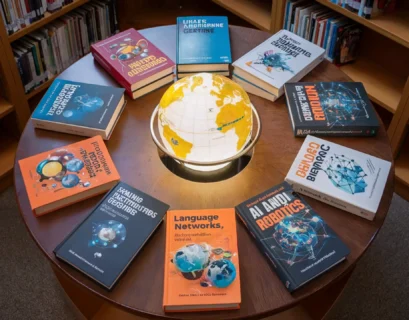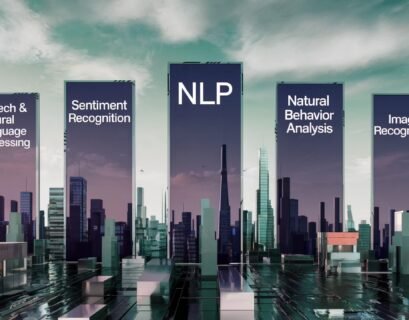NLP tools for developers have become essential in the rapidly evolving fields of artificial intelligence and machine learning. As we enter 2024, developers are seeking powerful tools to boost their text analysis capabilities. Whether you’re building chatbots, analyzing customer sentiment, or conducting advanced language research, selecting the right NLP tool is crucial for your project’s success. With the NLP market projected to reach $43.9 billion by 2025, staying updated with the best tools is more important than ever. In this comprehensive guide, we’ll explore the 10 best NLP tools that will elevate your text analysis projects and keep you at the forefront of language technology in 2024. Let’s dive in and discover which tools will take your NLP projects to new heights!
Understanding Natural Language Processing (NLP)
Before we jump into our list of top tools, let’s take a moment to understand what NLP is all about. Natural Language Processing is a branch of artificial intelligence that focuses on the interaction between computers and human language. It’s the technology that allows machines to understand, interpret, and generate human language in a valuable way.NLP plays a crucial role in various industries, including:
- Healthcare: Analyzing medical records and assisting in diagnosis
- Finance: Sentiment analysis for market predictions and fraud detection
- Customer Service: Powering chatbots and analyzing customer feedback
- Education: Automated essay grading and personalized learning systems
- Legal: Contract analysis and legal document processing
As a developer, having the right NLP tools in your arsenal can simplify complex language tasks and open up a world of possibilities for your projects. These tools provide pre-trained models, libraries, and APIs that can save you countless hours of development time and improve the accuracy of your language-related applications.
Criteria for Selecting the Best NLP Tools
When evaluating NLP tools, it’s essential to consider several factors to ensure you’re choosing the best option for your specific needs. Here are the key criteria we used to select the top 10 NLP tools for developers in 2024:
- Ease of use and integration: How quickly can you get started with the tool, and how well does it integrate with your existing tech stack?
- Performance and accuracy: Does the tool provide state-of-the-art results for your specific NLP tasks?
- Scalability and flexibility: Can the tool handle large-scale projects and adapt to your changing needs?
- Community support and documentation: Is there a strong community of developers and comprehensive documentation to help you overcome challenges?
- Pricing and licensing: Does the tool fit within your budget, and are the licensing terms suitable for your project?
With these criteria in mind, let’s explore the top 10 NLP tools that are making waves in 2024!
Top 10 NLP Tools for Developers in 2024
1. Stanford CoreNLP
Stanford CoreNLP is a Java-based NLP toolkit developed by Stanford University. It’s been a staple in the NLP community for years, and for good reason!Key features:
- Comprehensive set of NLP tasks (tokenization, POS tagging, named entity recognition, etc.)
- Support for multiple languages
- Easy-to-use API with wrappers for various programming languages
Pros:
- Highly accurate and well-maintained
- Extensive documentation and academic backing
- Suitable for both research and production environments
Cons:
- Can be resource-intensive for large-scale applications
- Steeper learning curve compared to some other tools
Stanford CoreNLP is an excellent choice for developers who need a robust, all-in-one NLP solution, especially for academic or research-oriented projects.
2. spaCy
spaCy has gained immense popularity among Python developers for its speed and efficiency. It’s designed with production environments in mind, making it a top choice for many companies.Key features:
- Fast and efficient processing
- Pre-trained neural network models
- Easy integration with deep learning frameworks
Pros:
- Excellent performance on various NLP tasks
- User-friendly API with great documentation
- Active community and frequent updates
Cons:
- Fewer pre-trained models compared to some other libraries
- May require more manual setup for certain advanced tasks
If you’re working with Python and need a fast, production-ready NLP library, spaCy should be at the top of your list!
3. NLTK (Natural Language Toolkit)
NLTK is a classic in the world of NLP, particularly popular in academic and research settings. It’s a comprehensive library that provides a wide range of NLP functionalities.Key features:
- Extensive collection of text processing libraries
- Large corpus and lexical resources
- Suitable for teaching and research purposes
Pros:
- Comprehensive documentation and educational resources
- Wide range of NLP tasks supported
- Large community and extensive third-party extensions
Cons:
- Can be slower than some newer libraries
- Not always the best choice for production environments
NLTK is an excellent tool for learning NLP concepts and prototyping ideas, making it ideal for students and researchers.
4. Gensim
Gensim specializes in topic modeling and document similarity, making it a powerful tool for specific NLP tasks.Key features:
- Efficient processing of large text corpora
- Implementation of popular topic modeling algorithms (e.g., LDA, LSI)
- Seamless integration with NumPy and SciPy
Pros:
- Excellent performance for topic modeling and similarity tasks
- Memory-efficient processing of large datasets
- Good documentation and active community
Cons:
- More specialized than general-purpose NLP libraries
- May require additional tools for comprehensive NLP pipelines
If your project involves a lot of topic modeling or document similarity analysis, Gensim should definitely be on your radar.
5. MonkeyLearn
MonkeyLearn offers a user-friendly platform for text analysis, with both no-code options and developer APIs.Key features:
- Easy-to-use interface for custom model training
- Pre-built models for common NLP tasks
- RESTful API for integration with various programming languages
Pros:
- Quick setup and deployment of NLP models
- Suitable for both developers and non-technical users
- Scalable solution for businesses
Cons:
- Less flexibility compared to open-source libraries
- Pricing may be a concern for large-scale usage
MonkeyLearn is an excellent choice for businesses looking to implement NLP solutions quickly without extensive in-house NLP expertise.
6. Amazon Comprehend
As part of the AWS ecosystem, Amazon Comprehend offers powerful NLP capabilities with the scalability of cloud computing.Key features:
- Pre-trained models for common NLP tasks
- Custom model training options
- Seamless integration with other AWS services
Pros:
- Scalable and reliable infrastructure
- Pay-as-you-go pricing model
- Good documentation and AWS support
Cons:
- Potential for vendor lock-in
- May require familiarity with AWS ecosystem
Amazon Comprehend is ideal for developers already working within the AWS ecosystem or those needing a scalable, cloud-based NLP solution.
7. Google Cloud Natural Language API
Google’s NLP offering provides state-of-the-art language understanding capabilities powered by machine learning.Key features:
- Entity recognition, sentiment analysis, and syntax analysis
- Content classification and entity sentiment analysis
- Support for multiple languages
Pros:
- Powerful and accurate models
- Easy integration with other Google Cloud services
- Continuous improvements based on Google’s research
Cons:
- Pricing can be high for large-scale usage
- Less flexibility compared to open-source alternatives
The Google Cloud Natural Language API is an excellent choice for developers looking for highly accurate, out-of-the-box NLP solutions, especially if they’re already using other Google Cloud services.
8. Microsoft Azure Cognitive Services
Microsoft’s Azure platform offers a suite of NLP tools as part of its Cognitive Services.Key features:
- Text Analytics API for sentiment analysis, key phrase extraction, and more
- Language Understanding (LUIS) for building conversational AI
- Translator API for machine translation
Pros:
- Comprehensive set of NLP services
- Integration with Azure’s AI and machine learning ecosystem
- Strong support for enterprise-level applications
Cons:
- Can be complex to navigate for beginners
- Pricing structure may be complicated for some users
Azure Cognitive Services is well-suited for enterprises already invested in the Microsoft ecosystem and looking for a wide range of AI capabilities.
9. OpenAI GPT
OpenAI’s GPT (Generative Pre-trained Transformer) models have revolutionized many NLP tasks with their impressive language generation capabilities.Key features:
- State-of-the-art text generation and completion
- Fine-tuning options for specific tasks
- Constantly evolving with new model releases
Pros:
- Cutting-edge performance on various language tasks
- Versatile applications from chatbots to content generation
- Active research and frequent improvements
Cons:
- Can be computationally expensive
- Requires careful consideration of ethical implications
OpenAI GPT is perfect for developers pushing the boundaries of what’s possible with NLP, especially in areas like conversational AI and creative text generation.
10. IBM Watson Natural Language Understanding
IBM’s Watson platform offers robust NLP capabilities through its Natural Language Understanding service.Key features:
- Advanced text analysis including concepts, entities, and semantic roles
- Custom model training for specific domains
- Integration with other Watson AI services
Pros:
- Enterprise-grade solution with strong support
- Industry-specific solutions available
- Comprehensive security and compliance features
Cons:
- Can be more expensive than some alternatives
- May have a steeper learning curve
IBM Watson is an excellent choice for large enterprises requiring robust, scalable NLP solutions, especially in regulated industries.
Comparing NLP Tools: Features and Use Cases
When choosing the right NLP tool for your project, it’s essential to consider the specific features and use cases that align with your needs. Here’s a quick comparison of our top 10 tools:
- Stanford CoreNLP: Best for comprehensive NLP pipelines and academic research
- spaCy: Ideal for fast, production-ready NLP in Python
- NLTK: Great for learning NLP and prototyping in academic settings
- Gensim: Specialized in topic modeling and document similarity
- MonkeyLearn: Perfect for quick deployment of custom NLP models
- Amazon Comprehend: Excellent for scalable, cloud-based NLP within the AWS ecosystem
- Google Cloud Natural Language API: Strong choice for accurate, out-of-the-box NLP solutions
- Microsoft Azure Cognitive Services: Comprehensive NLP suite for enterprise applications
- OpenAI GPT: Cutting-edge option for advanced language generation tasks
- IBM Watson Natural Language Understanding: Robust solution for large enterprises, especially in regulated industries
Each tool has its strengths, and the best choice will depend on your specific project requirements, scale, and expertise.
Emerging Trends in NLP Tools for 2024
As we look to the future of NLP, several exciting trends are shaping the landscape of tools and technologies:
- Advancements in transformer models: The success of models like GPT and BERT has led to a proliferation of transformer-based architectures, pushing the boundaries of what’s possible in NLP.
- Increased focus on multilingual and low-resource languages: NLP tools are expanding their language support, with a particular emphasis on improving performance for languages with limited training data.
- Integration of NLP with other AI technologies: We’re seeing more tools that combine NLP with computer vision, speech recognition, and other AI domains for more comprehensive solutions.
- Ethical AI and bias mitigation: There’s a growing emphasis on developing NLP tools that address issues of bias and promote fairness in language processing.
- Edge computing for NLP: As devices become more powerful, we’re seeing a trend towards running NLP models directly on edge devices for improved privacy and reduced latency.
Keep an eye on these trends as you evaluate and implement NLP tools in your projects!
Tips for Choosing the Right NLP Tool for Your Project
Selecting the perfect NLP tool can be overwhelming, but here are some tips to guide your decision:
- Assess your project requirements: Clearly define your NLP tasks and the scale of your project before evaluating tools.
- Consider your team’s expertise: Choose a tool that aligns with your team’s programming language preferences and skill levels.
- Evaluate the learning curve: Look for tools with good documentation and community support to ease the adoption process.
- Think about long-term scalability: Consider how the tool will perform as your project grows and evolves.
- Test before committing: Many tools offer free tiers or trial periods. Take advantage of these to test the tool’s performance on your specific use case.
- Stay informed about updates: The NLP field moves quickly. Stay updated on new releases and improvements to ensure you’re using the best available tools.
Conclusion
Wow, what a journey through the world of NLP tools! We’ve explored the 10 best options for developers in 2024, from the robust Stanford CoreNLP to the cutting-edge OpenAI GPT. Each tool offers unique strengths and capabilities, catering to a wide range of NLP needs and project requirements.As you embark on your NLP projects, remember that the perfect tool for you depends on your specific needs, project scale, and expertise. Whether you’re building a chatbot, analyzing customer sentiment, or diving into advanced language research, there’s an NLP tool out there waiting to supercharge your development process.The field of Natural Language Processing is evolving rapidly, with new advancements and technologies emerging all the time. By staying informed about the latest tools and trends, you’ll be well-equipped to tackle any language-related challenge that comes your way.So, what are you waiting for? Pick a tool, start experimenting, and watch your NLP projects soar to new heights! The future of language technology is in your hands – make it count! Whether you’re a seasoned NLP expert or just starting your journey, there’s never been a more exciting time to work with language and technology. Happy coding, and may your NLP adventures be filled with success and innovation!

















